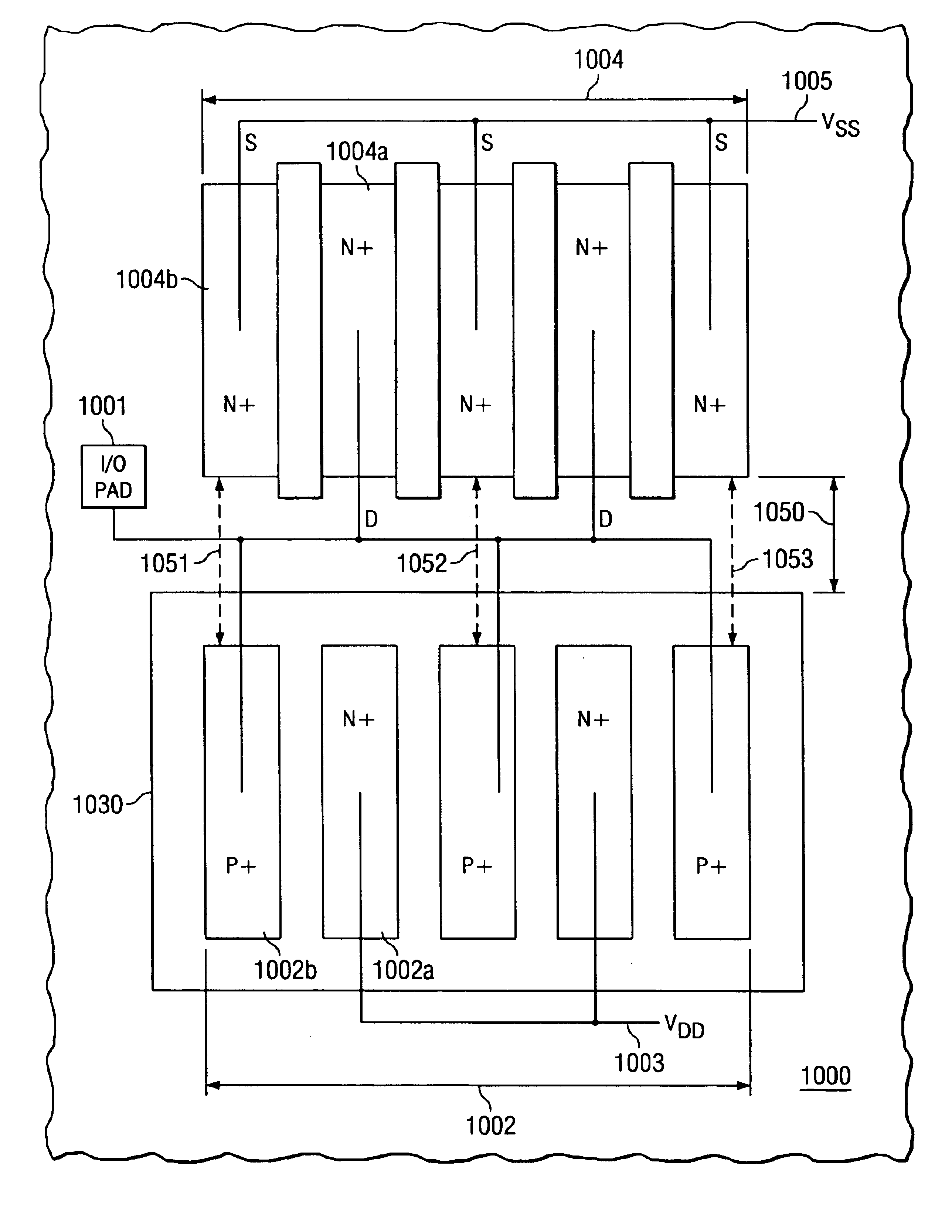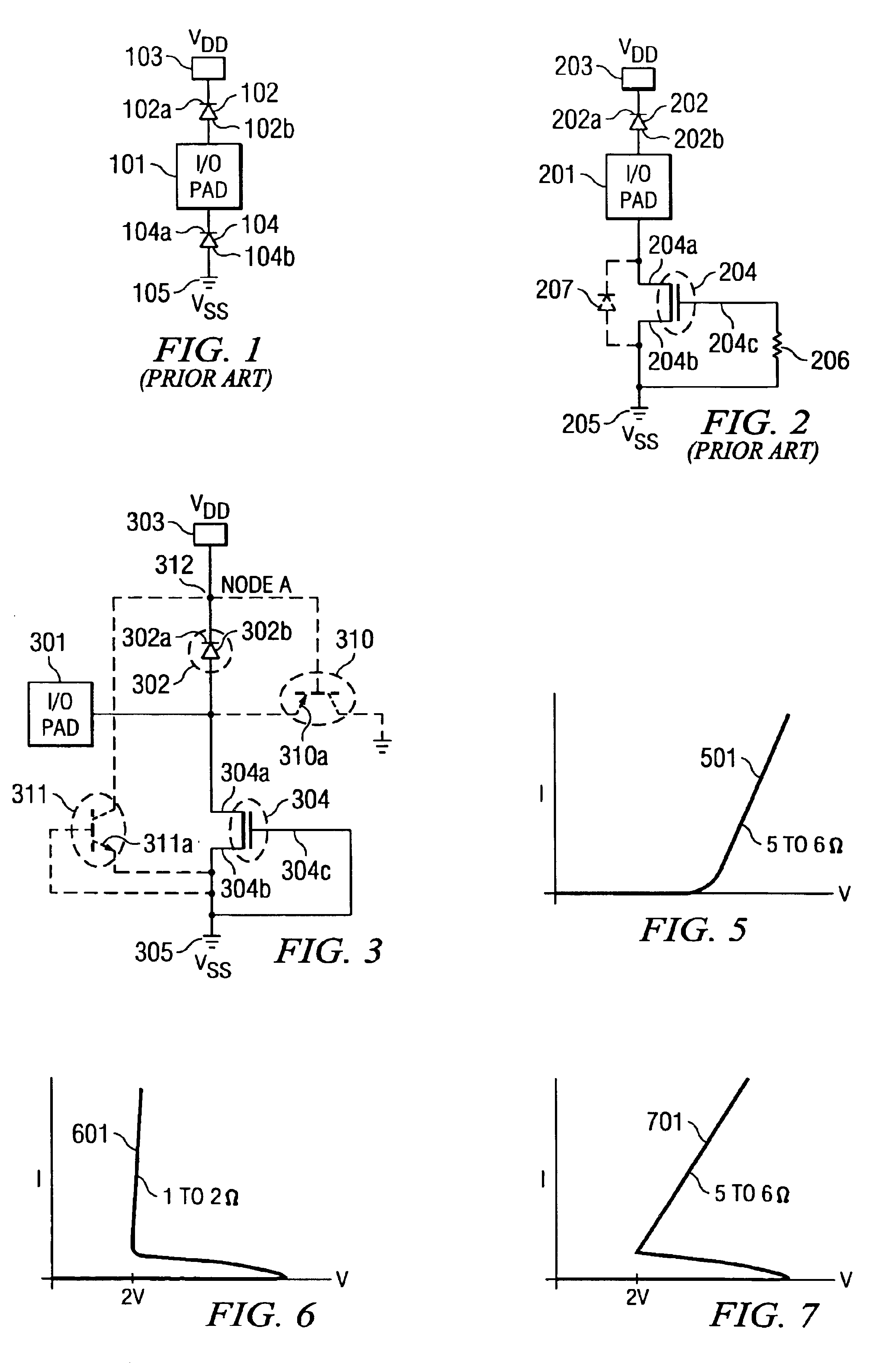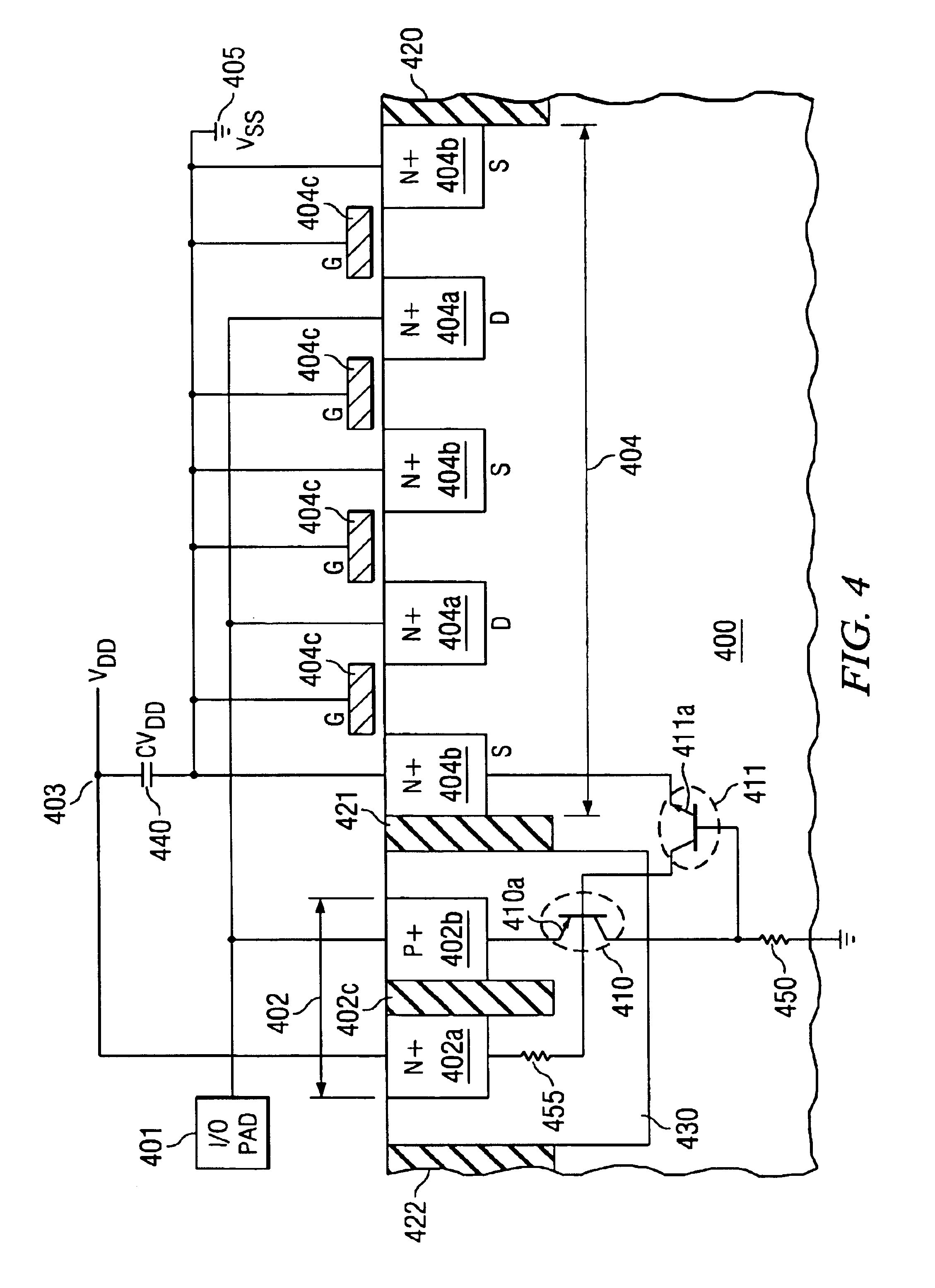Efficient ESD protection with application for low capacitance I/O pads
a low capacitance, i/o pad technology, applied in semiconductor devices, semiconductor/solid-state device details, diodes, etc., can solve the problems of thermal runaway in the device, ics may be severely damaged, onset of second breakdown, etc., to achieve lower leakage current, lower capacitance, and higher esd failure current
- Summary
- Abstract
- Description
- Claims
- Application Information
AI Technical Summary
Benefits of technology
Problems solved by technology
Method used
Image
Examples
Embodiment Construction
The impact if the present invention can be most easily appreciated by highlighting the shortcomings of the known approaches to provide protection against ESD events on input / output (I / O) pads of integrated circuits (IC). Compared to the ESD protection shown in FIG. 1, with diode 102 effective for positive stress and diode 104 for negative stress, an approach in known technology for improved protection device efficiency is presented in the schematic circuit diagram of FIG. 2. 201 designates the I / O pad to be protected. For positive ESD stress, diode 202 is effective, which has its cathode 202a connected to power terminal 203 (Vdd) and its anode 202b to pad 201. Connected to pad 201 is the drain 204a of MOS transistor 204. The source 204b of transistor 204 is tied to ground potential 205 (Vss); gate 204c of transistor 204 is also tied to ground 205, through resistor 206. For negative ESD stress, the parasitic diode 207 (with pad 201 as cathode and ground Vss 205 as anode) of transisto...
PUM
 Login to View More
Login to View More Abstract
Description
Claims
Application Information
 Login to View More
Login to View More - R&D
- Intellectual Property
- Life Sciences
- Materials
- Tech Scout
- Unparalleled Data Quality
- Higher Quality Content
- 60% Fewer Hallucinations
Browse by: Latest US Patents, China's latest patents, Technical Efficacy Thesaurus, Application Domain, Technology Topic, Popular Technical Reports.
© 2025 PatSnap. All rights reserved.Legal|Privacy policy|Modern Slavery Act Transparency Statement|Sitemap|About US| Contact US: help@patsnap.com



